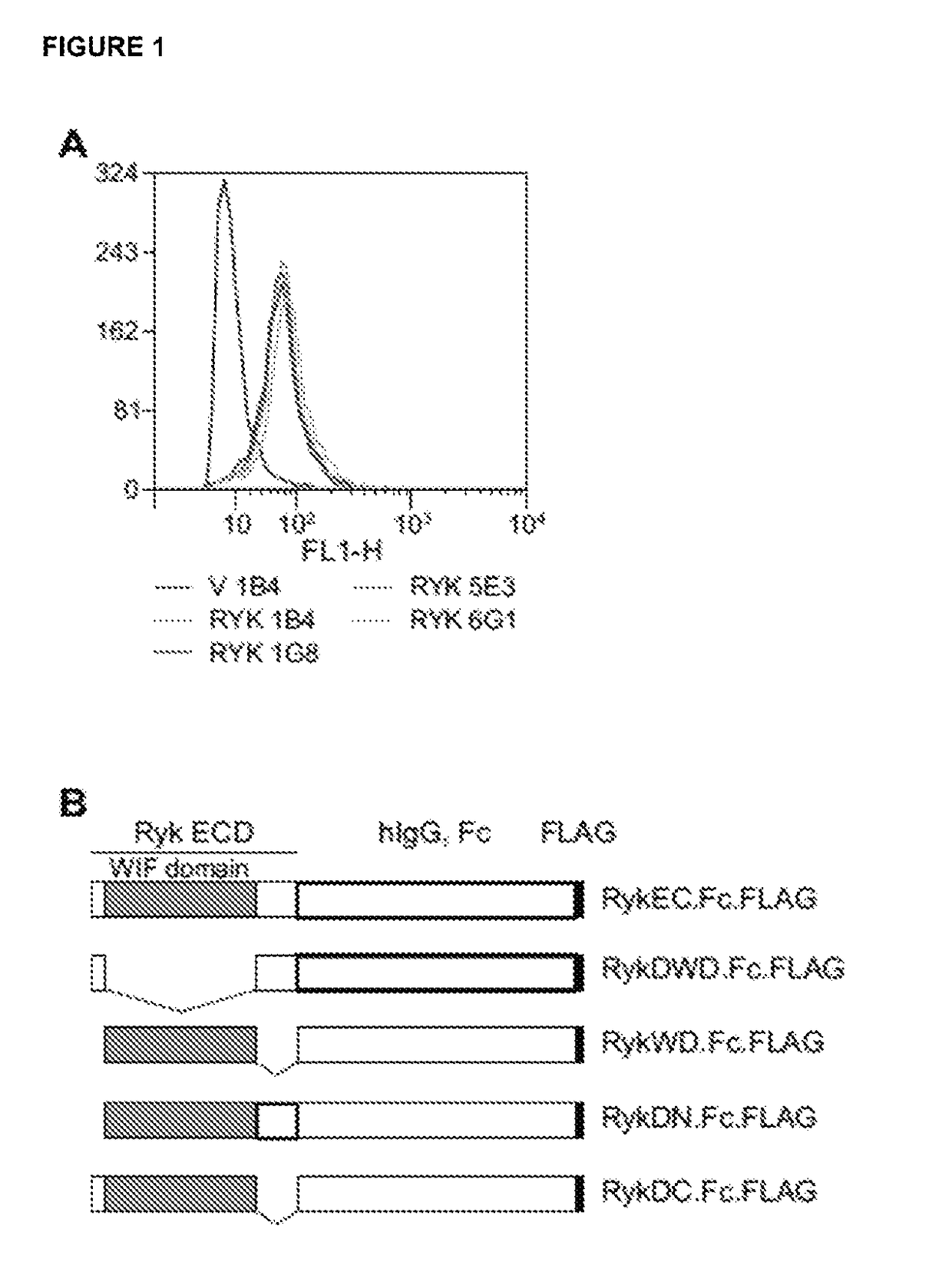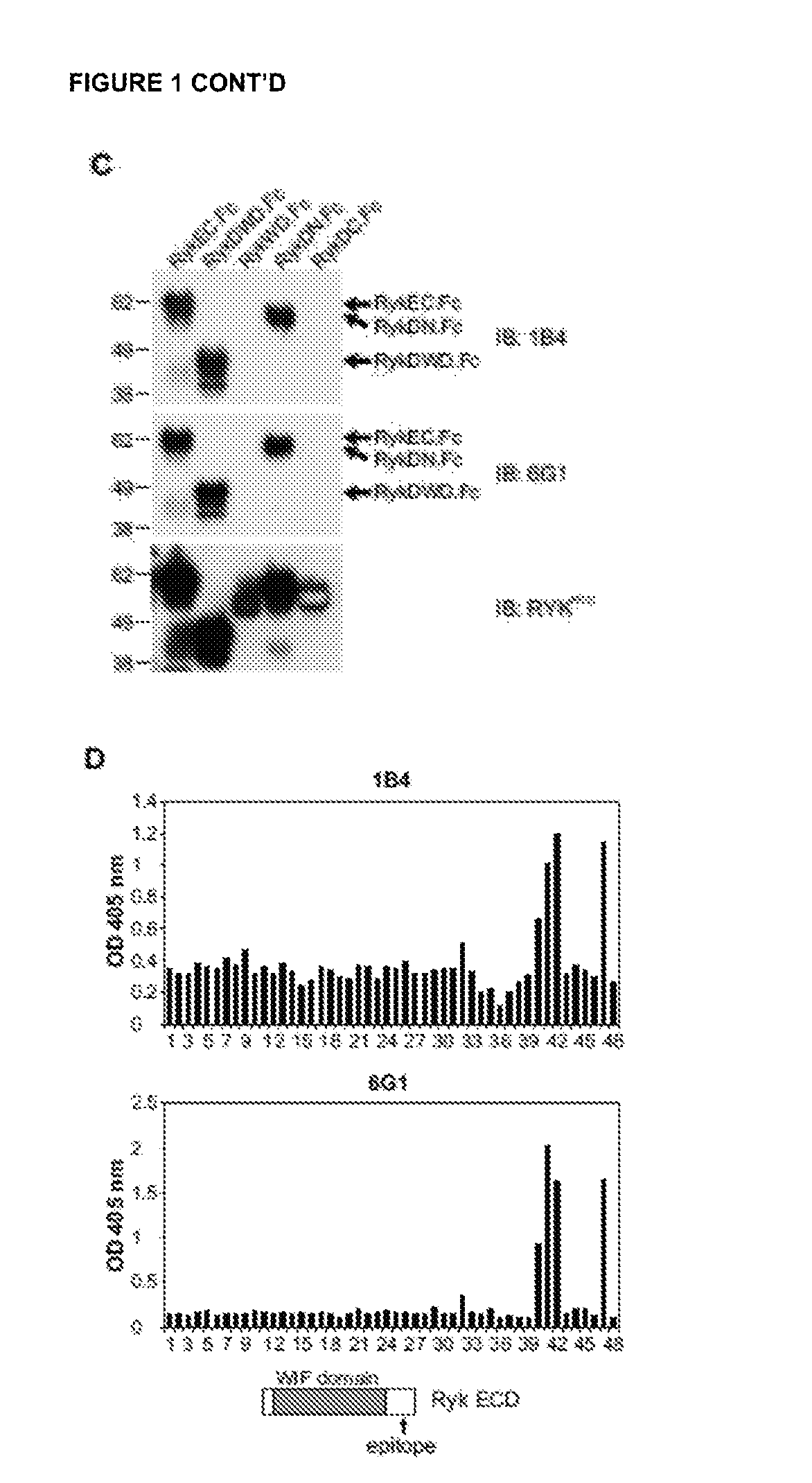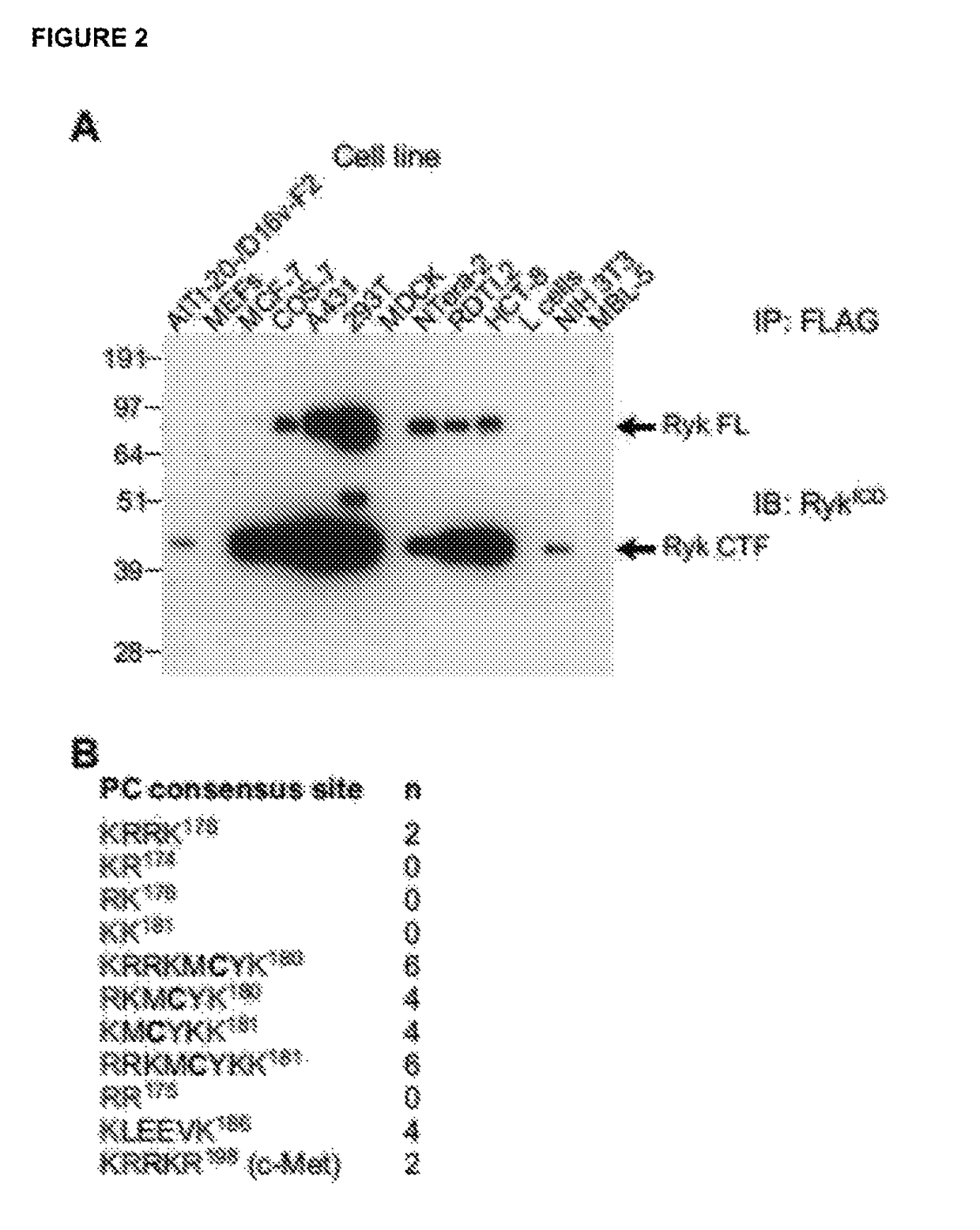Antibodies against human RYK and uses therefor
a technology of ryk and antigen, which is applied in the field of antigen binding fragments and antibodies of human ryk, and can solve the problems of inability to inhibit ryk function with conventional ptk inhibitors, unsatisfactory antigen binding effect, and inability to provide a specific mechanism to antagonize ryk function
- Summary
- Abstract
- Description
- Claims
- Application Information
AI Technical Summary
Benefits of technology
Problems solved by technology
Method used
Image
Examples
example 1
n of Monoclonal Antibodies to the RYK Extracellular Domain and Epitope Mapping
Materials and Methods:
[0224]HEK293T, CHO-K1, AtT-20 / D16v-F2, MCF-7, A431, MDCK, HCT-8, L cells and NIH 3T3 cells were from the American Type Culture Collection. Mouse embryonic fibroblasts (MEFs) were derived from wild-type mouse embryos as described (Wurst W, et al., 1995, Production of targeted embryonic stem cell clones. In: Richwoiod D, Hames B D, editors. Gene Targeting: A Practical Approach. Oxford: IRL Press. pp. 33-61). COS-7 cells were from Brian Seed (Harvard University). 293-EBNA cells were from Life Technologies. Cells were maintained in DMEM or RPMI 1640 (Life Technologies) supplemented with 10% heat-inactivated FBS. H-RYK-FLAG / CHO cells were maintained in glutamine-free GMEM (SAFC) supplemented with 10% heat-inactivated and dialyzed FBS, GS supplement (SAFC) and 25 μM methionine sulfoximine (glutamine synthase inhibitor; Sigma-Aldrich). Hybridomas were maintained ...
example 2
ive Proteolytic Processing of the RYK Extracellular Domain
Materials and Methods
[0238]Mouse RYK constructs encoding substitutions in the proprotein convertase (PC) consensus sites were transiently transfected into COS-7 cells using FuGENE 6. Medium was changed 24 h later, and cells were treated with the furin inhibitor decanoyl-RVKR-chloromethylketone (Bachem) or an equal volume of DMSO for 12 h before harvesting. Forty-eight hours post-transfection, cells were washed twice with cold PBS before lysis in 1 ml of lysis buffer (50 mM Tris pH 7.5, 150 mM NaCl, 1% Triton X-100) supplemented with 1 mM Na3VO4 and 1× complete protease inhibitor cocktail (Roche Diagnostics), for 30 min. Insoluble material was removed by centrifugation at 16,000 g, 15 min, 4° C. and the supernatant was used for analysis. Protein concentrations were determined using the BCA Protein Assay (Pierce; Thermo Scientific) and immunoprecipitations were performed from equal amounts of lysate protein using anti-FLAG M2 a...
example 3
n of RYK Inhibitory Antibodies by Screening a Human scFv Phage Display Library
Materials and Methods
Generation of a RYK WIF Domain-Specific Chimeric Protein
[0245]To generate antibodies directed specifically to the RYK WIF domain, we produced a construct that contains the WIF domain of RYK, lacking the carboxyl-terminal cleavage site, fused to the Fc region of human IgG1, termed hRYKWD.Fc. This construct generated a stable 53 kDa protein in CHO-K1 cells. When purified, the fusion protein retained the ability to bind to Wnt proteins, as shown by co-immunoprecipitation (FIG. 3A).
Phage Display Antibody Screening
[0246]A phage display antibody library screen was performed using a combination of a direct binding assay to purified hRYKWD.Fc and a competitive ELISA assay (CD BioSciences Inc., NY, USA). The screening protein, purified hRYKWD.Fc, was used on a human scFv naïve phage display library in three rounds of screening. The final (third) round of screening was performed using recombinan...
PUM
| Property | Measurement | Unit |
|---|---|---|
| time | aaaaa | aaaaa |
| time | aaaaa | aaaaa |
| pH | aaaaa | aaaaa |
Abstract
Description
Claims
Application Information
 Login to View More
Login to View More - R&D
- Intellectual Property
- Life Sciences
- Materials
- Tech Scout
- Unparalleled Data Quality
- Higher Quality Content
- 60% Fewer Hallucinations
Browse by: Latest US Patents, China's latest patents, Technical Efficacy Thesaurus, Application Domain, Technology Topic, Popular Technical Reports.
© 2025 PatSnap. All rights reserved.Legal|Privacy policy|Modern Slavery Act Transparency Statement|Sitemap|About US| Contact US: help@patsnap.com



